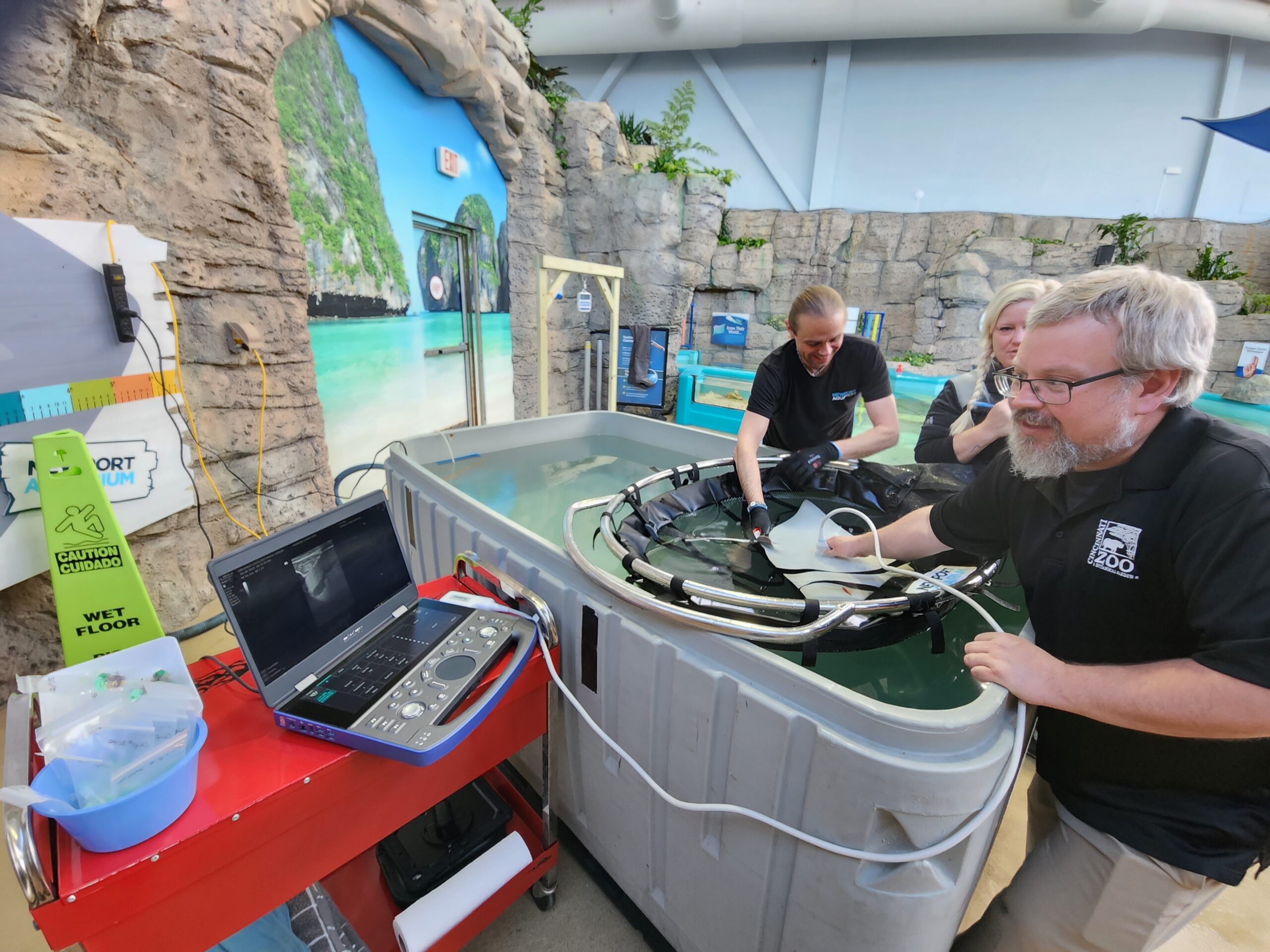Summary of Cincinnati Zoo and Newport Aquarium Pull Off a Sting Operation:
On March 26, 2024, the Cincinnati Zoo & Botanical Garden and Newport Aquarium collaborated to perform comprehensive health exams on 14 female cow nose stingrays at the Aquarium. The joint effort involved detailed steps such as anesthesia induction, body measurements, microchip verification, ultrasounds, blood draws, and weight checks aimed at ensuring minimal stress and confinement for the rays. The partnership leveraged the strengths of both organizations, showcasing the importance of collaboration in zoological medicine. This endeavor highlighted the commitment of both facilities to animal health and conservation and provided a valuable learning and skill-sharing opportunity for their teams. Visiting Cincinnati Zoo and Newport Aquarium websites are encouraged for more information.
– The significance of collaboration between zoo and aquarium professionals in advancing animal health and conservation.
– Detailed processes involved in the health examination of aquatic animals, focusing on stingrays.
– The role of state-of-the-art technology and expertise in veterinary care for zoo and aquarium animals.
– The impact of proactive health management on the conservation efforts of endangered species.
– The educational and conservation missions of institutions like Cincinnati Zoo and Newport Aquarium.
The joint sting operation conducted by Cincinnati Zoo & Botanical Garden and Newport Aquarium represents a hallmark in collaborative animal health management. It marks a significant advancement in the way zoological institutions approach the care and conservation of aquatic species. This initiative, focusing on the comprehensive health examination of 14 female cow nose stingrays, underscores the meticulous planning and cooperation between these renowned conservation-based organizations.
In the world of zoology, the health and welfare of animals are paramount. The recent endeavor by Cincinnati Zoo and Newport Aquarium illustrates this commitment through a seamless blend of expertise, technology, and a shared vision for animal conservation. The examination process for the cow nose stingrays was meticulously planned. It involved anesthesia, body measurements, microchip ID confirmations, ultrasounds, blood draws, and animal weighing. Such a detailed approach highlights the complexity of veterinary care for aquatic animals and the lengths institutions go to maintain their health.
Veterinary technology plays a crucial role in these operations. Ultrasound and microchip scanning provide critical data, allowing for a non-invasive insight into the health of each ray. Blood tests further offer detailed information on the health status, ensuring that any issues are identified and addressed proactively. This level of care indicates the advancing field of zoological medicine, where technology and veterinary expertise converge to offer the best possible outcomes for animal health and welfare.
The collaboration between Cincinnati Zoo and Newport Aquarium extends beyond mere convenience. It represents a symbiotic relationship built on mutual conservation and animal health goals. Such partnerships are essential in wildlife conservation, where resources and expertise are often limited. Sharing these vital assets enhances the capacity for both institutions to care for a broader range of species effectively. Moreover, these collaborations offer staff from both facilities unique opportunities to broaden their experience and expertise, particularly with species they may not regularly encounter.
As demonstrated by the operation, proactive health management is a cornerstone of modern conservation efforts. Early detection of health issues and regular health assessments can significantly improve the quality of life for zoo and aquarium inhabitants and help secure the populations of endangered species. These efforts are particularly vital in the context of cow nose stingrays and similar species, where global populations face threats from habitat destruction, climate change, and human activity. Conservation-focused organizations like Cincinnati Zoo and Newport Aquarium are at the forefront of these efforts, demonstrating the impact of proactive health and welfare standards on broader conservation objectives.
Additionally, this collaborative effort serves an educational purpose, raising public awareness about animal healthcare’s complexities and conservation’s importance. By showcasing their work, both institutions contribute to a greater understanding and appreciation of the natural world, inspiring future conservationists and veterinarians.
The partnership between Cincinnati Zoo and Newport Aquarium exemplifies the evolving nature of animal healthcare in conservation settings. It highlights the importance of collaboration, the role of advanced veterinary technology, and the impact of proactive health management on the success of species conservation. Through such initiatives, these institutions continue to lead by example, showcasing innovative approaches to the care, welfare, and conservation of the planet’s diverse fauna.


